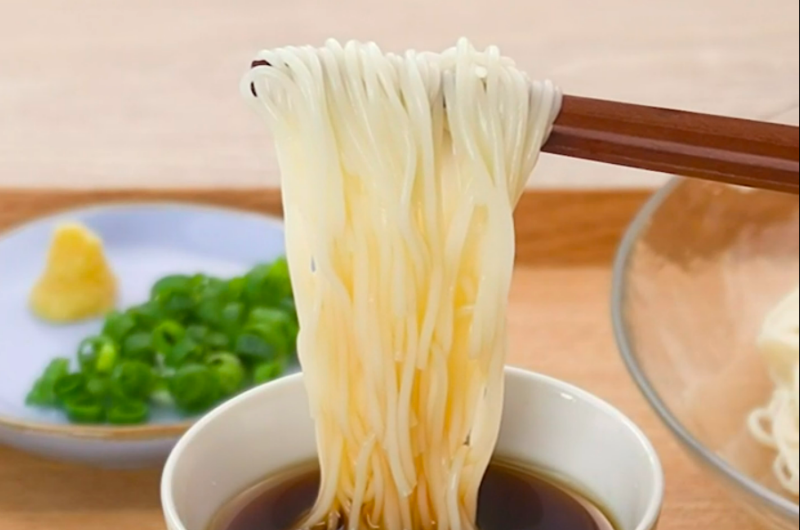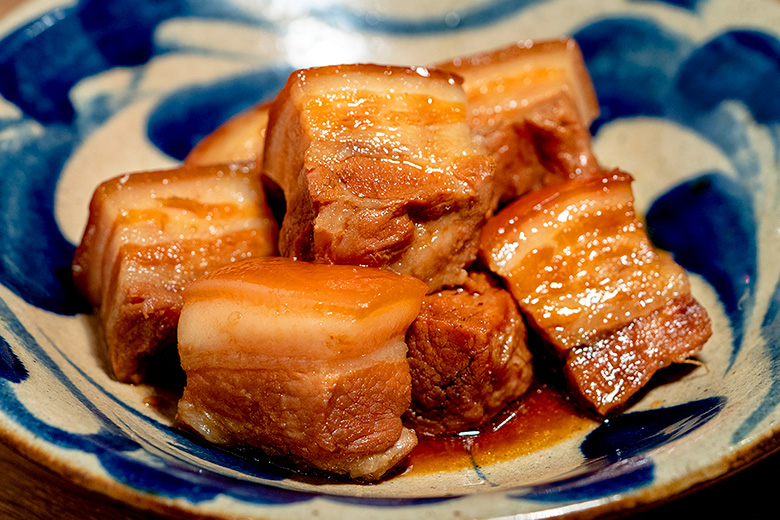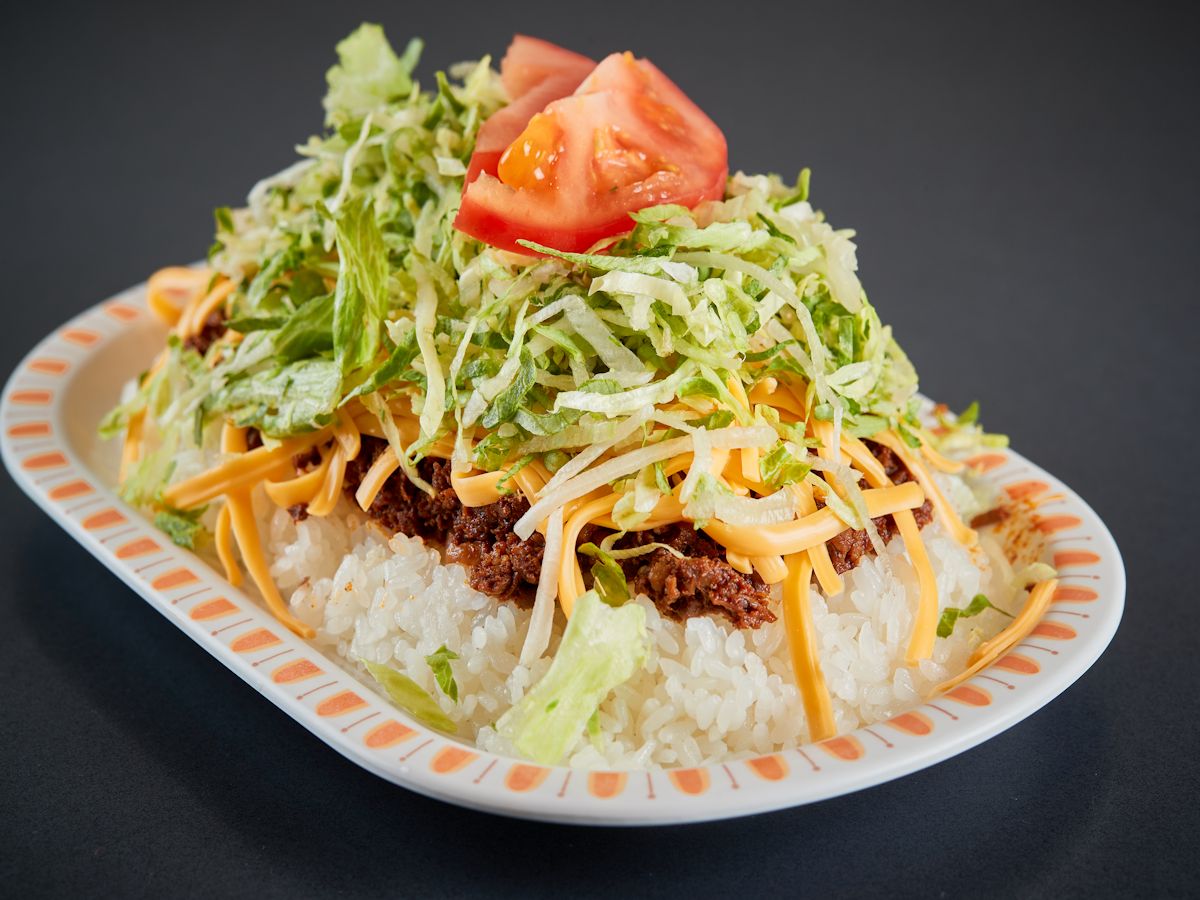
Somen (素麺) is a super thin wheat noodle originally from Nara Prefecture (Kansai Region).
It is now eaten all across Japan, and is particularly popular as a cold dish during the hot summer months.
One popular way to eat somen during the summertime is called nagashi-somen (流しそうめん), or “flowing somen”. Servings of noodles are placed in a flowing stream of water, and customers must pick the noodles from the stream to eat.
Read on for more interesting info about somen:
Somen Ingredients
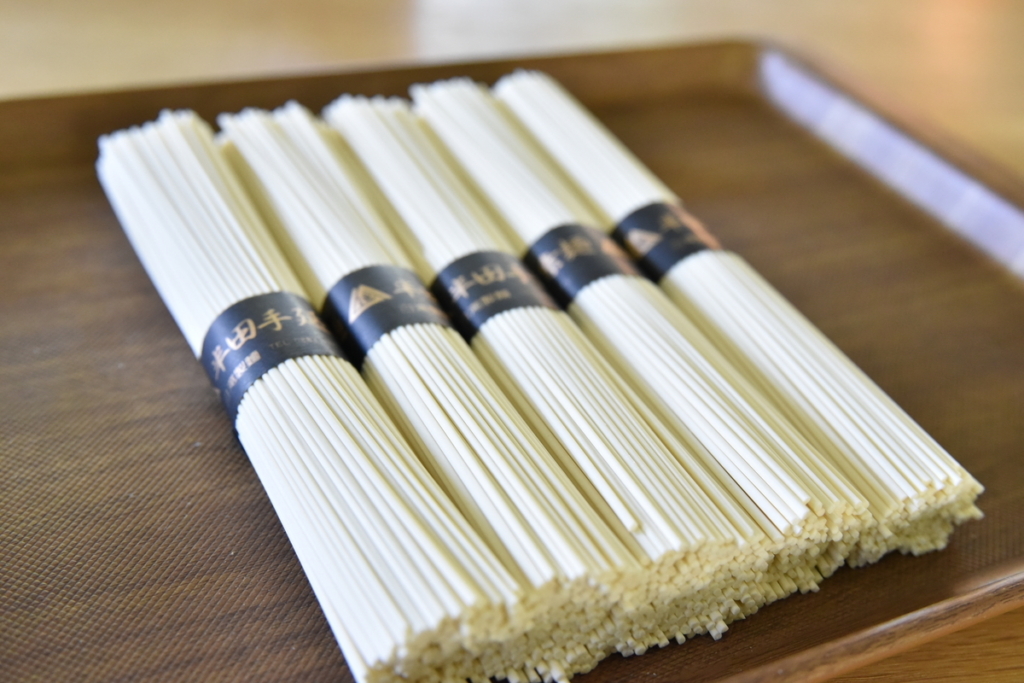
The main ingredients used to make somen noodles are:
- Wheat flour
- Water
- Salt
Typically, a bit of vegetable oil is also used when making somen to prevent the noodles from sticking together.
Traditionally, somen noodles were made by hand stretching, then drying in the sun. These days, machine-made somen noodles are more common. Machine-made noodles are not actually stretched, but instead cut into thin strips.
Basic somen ingredients are the same as many other Japanese noodle types — like udon — so, how can you differentiate them?
For machine-made, dried somen noodles, the JAS (Japanese Agricultural Standards) states that the diameter of somen noodles must be less than 1.3 mm. Hand-made noodles can be classified as somen if they are less than 1.7mm in diameter.
Somen Dishes / Ways to eat
Somen is most popularly eaten as as a cold/chilled noodle dish during the hot/humid summer months. The noodles are simply cooked, then cooled in ice water, and served with a dipping sauce (e.g. mentsuyu / tsuketsuyu) and other condiments.
Below are a few other popular ways to eat somen noodles:
Nagashi Somen (流しそうめん)
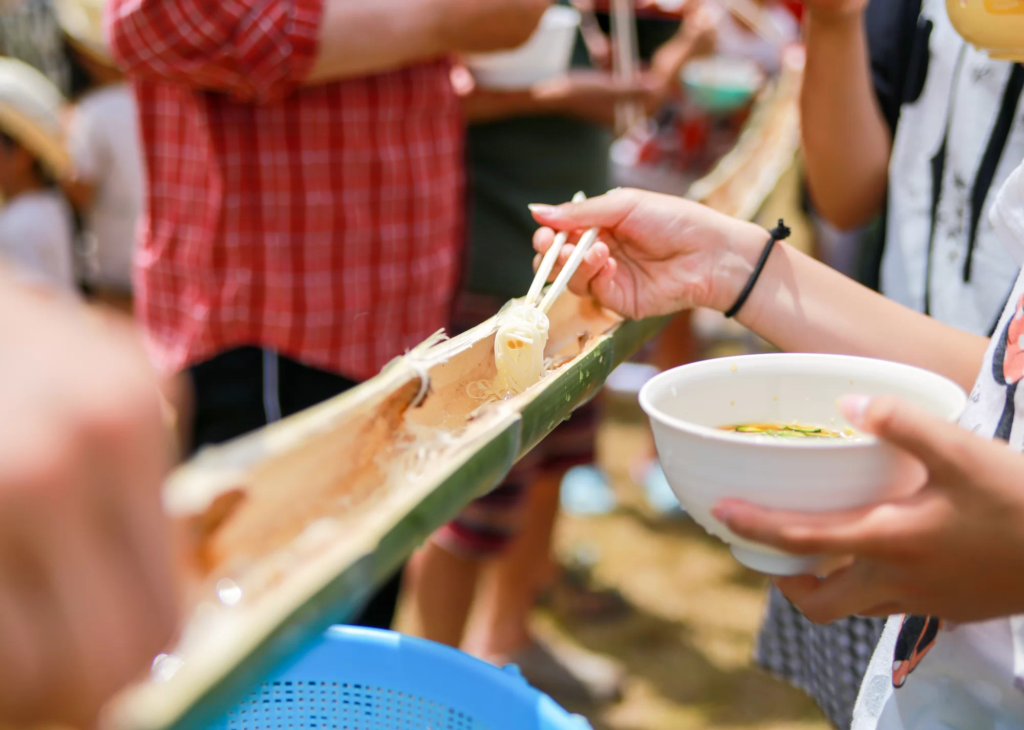
Nagashi Somen literally means “flowing” somen. Small portions of somen noodles are placed in a channel of flowing cold water. The channel/flume is typically made from bamboo, though other materials may be used.
Customers stand/sit in front of the flowing water, and must use their chopsticks to pick up the noodles as they float by. They can then dip their caught noodles in a sauce and enjoy as usual.
Nagashi somen is a very unique and entertaining way to enjoy somen noodles. It is typically only enjoyed in the summertime. If you ever get the chance to try, don’t pass up the chance!
Somen Salad (そうめんサラダ)
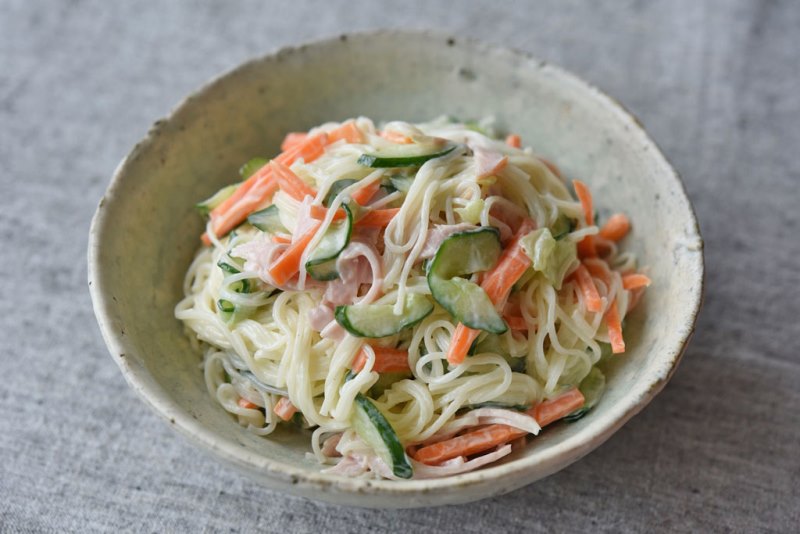
Somen salad is exactly what it sounds like. It is simply a cold noodle salad made with somen, and other typical vegetables like cucumber, tomatoes, carrots, etc. Everything is topped with a dressing, and enjoyed. Meats/seafood may also be added like ham, shrimp, etc.
Somen salad is a refreshing dish that is also typically enjoyed during summer.
Nyumen (にゅうめん)
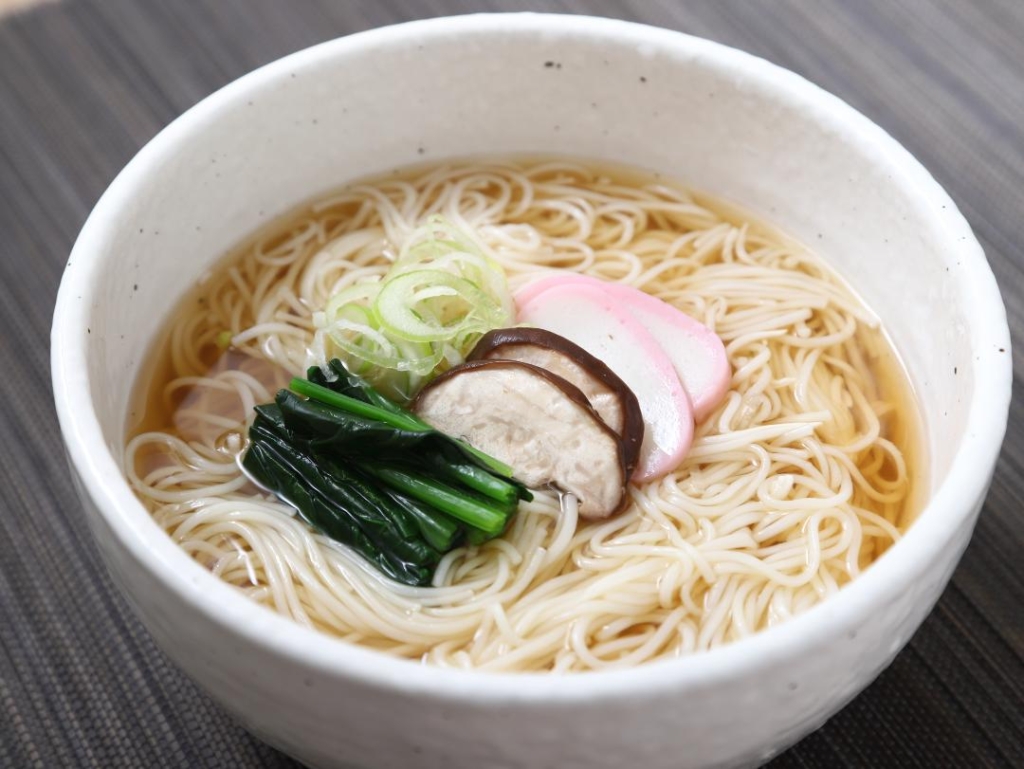
Nyumen is a hot noodle soup dish made with somen. The somen noodles are boiled, then served in a hot soup/broth. Various toppings can be added like mushrooms, vegetables, or seafoods.
Nyumen is said to have originated in Miwa region (Nara prefecture), which is also thought to be the birthplace of somen in Japan.
Read more about local somen varieties below:
Location / Local Varieties
These days, somen can easily be found in supermarkets all across Japan.
There are many other regions in Japan which also specialize in producing somen noodles. Most of these places are located in Western Japan, as that is where wheat production was historically most prevalent.
The “big 3” somen types in Japan are: Miwa Somen (三輪そうめん), Ibo no ito (揖保乃糸), and Shadoshima somen (小豆島そうめん) 1https://ja.wikipedia.org/wiki/%E6%97%A5%E6%9C%AC%E4%B8%89%E5%A4%A7%E4%B8%80%E8%A6%A7#%E9%A3%9F%E7%94%9F%E6%B4%BB
Let’s take a quick look at each one:
Miwa Somen (三輪そうめん)
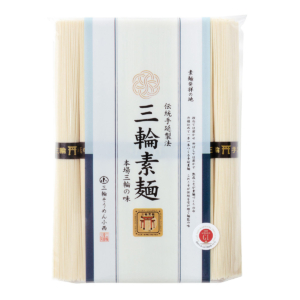
Miwa (Sakurai City, Nara Prefecture) is the birthplace of somen in Japan, and still remains an important somen producing region today.
Traditional Miwa Somen uses a bit vegetable oil in its production, and is characterized by its chewy texture. Miwa somen is also classified into four categories by its thinness. The thinner it is, the more premium the noodle.
Ibo no ito (揖保乃糸)
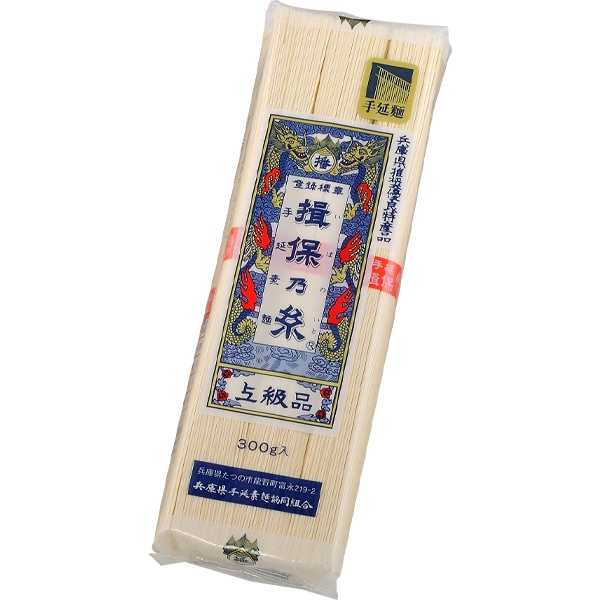
Ibonoito somen is from Tatsuno City, Hyogo Prefecture. It is actually a brand of somen made and managed by the “Hyogo Prefecture Tenobe Somen Cooperative Association”.
Ibononoito somen is only produced during seven months of the year (October – April), and uses the same basic manufacturing process created over 600 years ago (with some technological improvements, of course). The entire 11-step process can be viewed on their website.
Similar to Miwa Somen, Ibo no ito somen is also ranked into four grades/categories based on thinness (and other features). The most premium somen is the thinnest (0.55-0.6mm)
Shodoshima somen (小豆島そうめん)
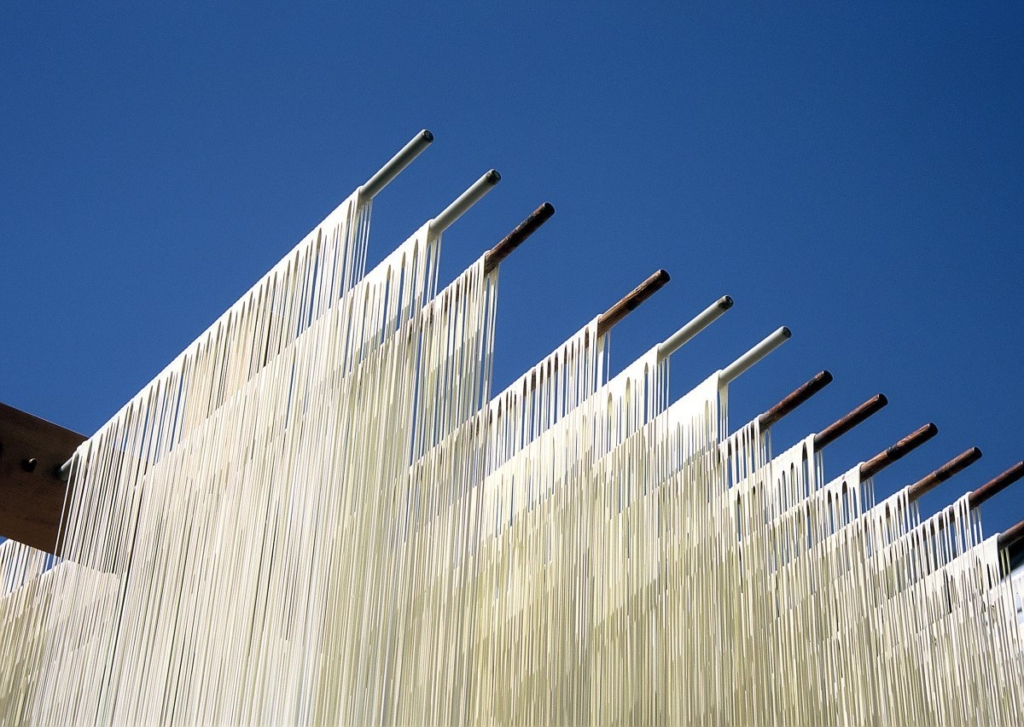
Shodoshima somen is from Shodoshima (i.e. Shodo Island) in Kagawa Prefecture.
It is characterized by its use of sesame oil, and for being dried in the sun (as opposed to indoors). The manufacturing techniques are the same that were used over 400 years ago.
Shodoshima somen is classified into 2 grades: red belt or black belt. Black belt is the more premium version.
There is also a “Olive” flavored/colored somen which makes use of local olives (another specialty of Shodoshima).
The Noodle Prefecture: Kagawa is also/more famous for its udon noodles (i.e. Sanuki Udon)
History / Origin of Somen
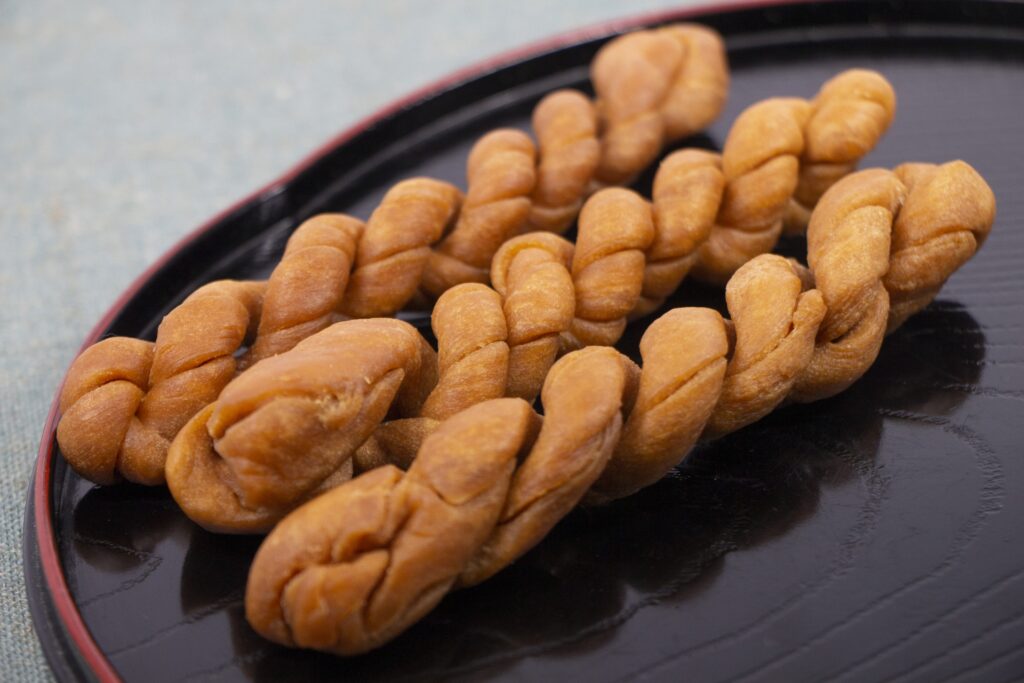
Somen was originally brought to Japan from China sometime during the Nara period (710 to 794). The original location was in Nara Prefecture, because that is where the capital city was at the time.
The original “somen” actually wasn’t noodles at all. It was “sakubei” (索餅 / さくべい), which is a sweet, fried dough twisted together like a rope.
Somen noodles evolved from this somehow during the Kamakura period or Muromachi Period (1336 to 1573), when the Chinese also introduced techniques to make hand-stretched noodles.
During this time, somen was still rare, and only eaten by the wealthy and aristocrats.
It wasn’t until the Edo period (1600 to 1868) that somen became a food enjoyed by the common folk. During this time, production methods became common knowledge, and somen spread throughout Japan (particularly in Western Japan where wheat production was more prevalent).
Easy Somen Recipe
You can use somen just like any other noodles. You can make a noodle soup, stir fry it, or eat it cold.
The most popular way to eat somen in Japan is chilled. Simply boil the noodles, cool them off in ice or cold water, drain, then eat together with with a dipping sauce/soup (i.e. Tsuketsuyu).
Here’s a super easy how-to recipe from Delish Kitchen and Ibonoito:
Cold Somen Noodles & Dipping Sauce Recipe
Course: MainCuisine: JapaneseDifficulty: Easy2
servings15
minutes5
minutes20
minutesBasic way to enjoy somen noodles
Ingredients
- Equipment
Colander
Chopsticks
Pot
- Ingredients
Dried Somen … 150g
Water … 1.5L
- Dipping Sauce
Water … 250 ml
Mirin … 2 tablespoons
Sugar … 1/2 tablespoon
Soy sauce … 3 tablespoons
Instant dashi powder … 1/2 teaspoon
- Toppings / Garnish (optional)
Green onions … appropriate amount
Grated ginger … appropriate amount
Directions
- Dipping Sauce
- Make the sauce. Add all dipping sauce ingredients to a pot and bring to a boil over medium heat.
- Once boiled, turn off the heat, and set sauce aside to cool (preferably in refrigerator)
- Noodles
- Bring approximately 1.5 L of water to a boil over high heat (i.e. approximately 1L water to 100g somen)
- Once water is boilng, spread the dried somen noodles into the pot.
- Cook over high heat until water boils again. Stir noodles around with your chopsticks so the noodles don’t stick together.
- When water boils again, lower heat to simmer and cook for 1.5-2min more, until noodles are translucent.
- Transfer the cooked noodles to a colander, and rinse well with running cool water.
- When noodles are cool enough to touch, use your hands to thoroughly rinse off any remaining slime from noodles.
- Thoroughly drain excess water from noodles.
- Put some noodles in bowl; enjoy with the dipping sauce and toppings.
Notes
- To save some time, simply buy mentsuyu and add water to make the dipping sauce. Approximate ratio of 50ml mentsuyu to 150ml water (adjust to your own taste).
Fun Facts and FAQ
- July 7th is “Somen Day”, which is also tanabata day (七夕)
- There is a Nagashi Somen Association, and Somen Japan project aimed at promoting somen noodles in Japan and the world.
Summary
Have you ever tried somen before? What did you think of it?
Leave your thoughts and comments below!
